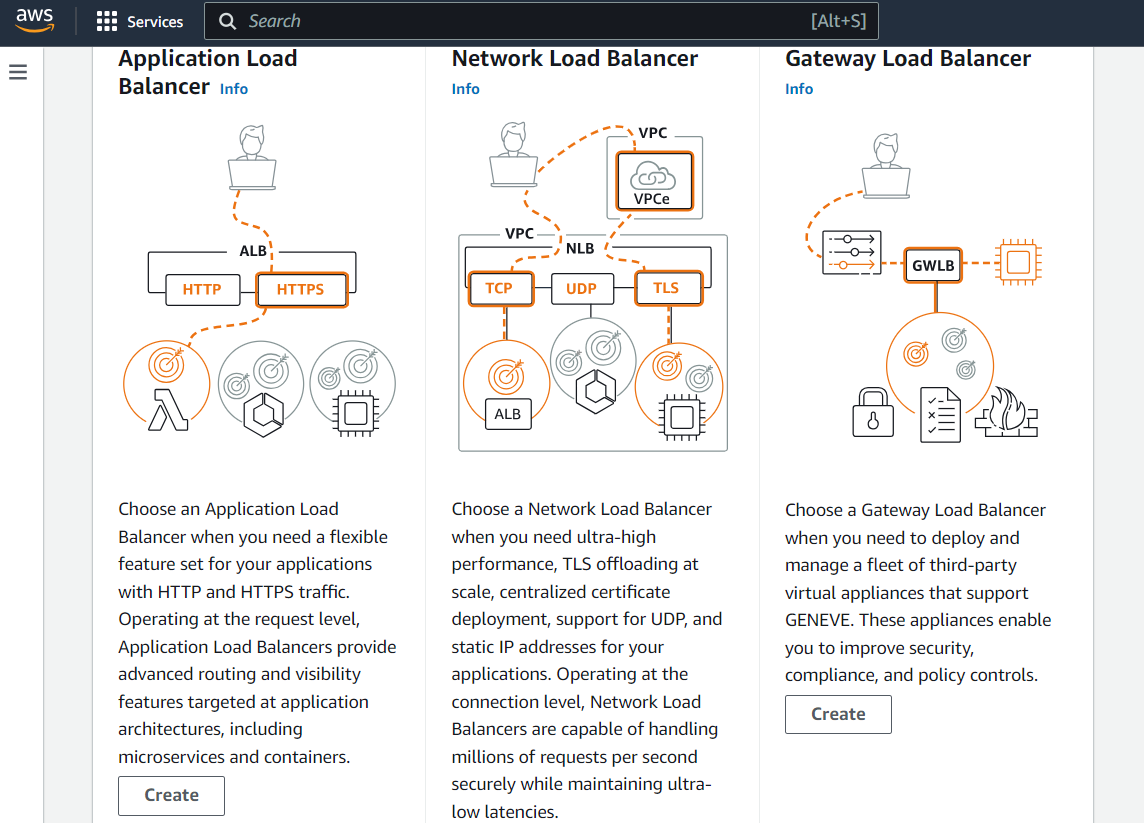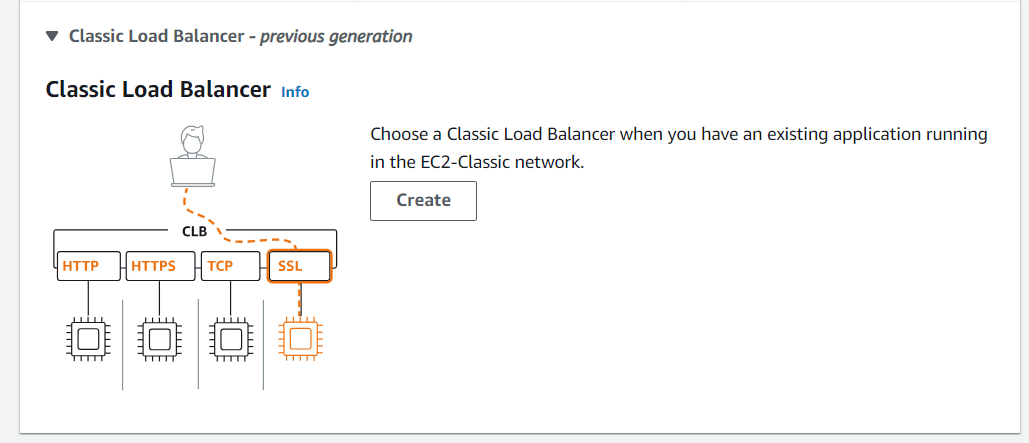Optimizing Your Applications with AWS Elastic Load Balancing
 Jasai Hansda
Jasai Hansda
Elastic Load Balancing (ELB) is a critical component of AWS infrastructure that distributes incoming traffic across multiple targets, such as EC2 instances, containers, and IP addresses. This distribution ensures optimal performance, increased reliability, and improved availability for your applications.
Simple Analogy
Let's understand what Load Balancing is firsthand with this analogy and how Elastic Load Balancing (ELB) plays a role in it.
Imagine you're a chef(EC2 instance) in a popular restaurant. You're skilled at your job but can only handle a certain number of orders at a time. You want to ensure that customers are happy and their food is served promptly.
The manager (ELB) plays a crucial role in making sure you're not overwhelmed. They distribute orders among the chefs efficiently. If you're too busy, they send fewer orders your way. If you're free, they send more. This ensures that all customers are served quickly and that no single chef is overworked.
In essence, the manager (ELB) acts as a traffic controller, ensuring smooth operations and customer satisfaction by effectively distributing the workload among the chefs (EC2 instances).
How Elastic Load Balancing (ELB) Works
ELB Operation: ELB listens to incoming traffic on specified ports and protocols like HTTP, HTTPS, and TCP.
Traffic Distribution: ELB uses load balancing algorithms to distribute traffic across registered targets, including EC2 instances, containers, and IP addresses.
Algorithms: These algorithms can be configured based on factors such as the least number of active connections, round-robin, or the target's response time.
Health Monitoring: If a target is unhealthy, ELB automatically routes traffic away from it to ensure only healthy instances receive traffic.
High Availability: This monitoring and rerouting process helps maintain high availability and reliability for your applications.
Performance Optimization: By efficiently distributing traffic and ensuring only healthy targets handle requests, ELB optimizes application performance.
Prevent Overloading: ELB prevents any single instance from being overloaded.
Enhanced User Experience: This leads to an overall better user experience.
Types of Elastic Load Balancers
AWS offers three primary types of load balancers, each designed for specific use cases:
1. Application Load Balancer (ALB)
Designed for HTTP and HTTPS traffic.
Offers advanced features like target grouping, path-based routing, and SSL/TLS termination.
Ideal for web applications and microservices architectures.
2. Network Load Balancer (NLB)
Operates at the transport layer (TCP, UDP) and offers extremely low latency.
Supports connection draining and health checks.
Suitable for high-performance applications like gaming, streaming, and financial trading.
3. Gateway Load Balancer (GLB)
- Simplifies deployment, scalability, and high availability for partner appliances.
- Offloads common networking functions like SSL/TLS termination, load balancing, and access control.
- Ideal for enterprise applications requiring complex networking configurations.
4. Classic Load Balancer (CLB)
- AWS's original load balancer, handling both HTTP/HTTPS and TCP traffic.
- Supports sticky sessions, routing requests from the same client to the same instance, useful for session persistence.
- Performs health checks to ensure traffic is routed to healthy instances.
- Reliable for simpler use cases, providing basic load balancing and high availability.
Go to EC2 > Load balancers > Compare and select load balancer type


Role of Elastic Load Balancing (ELB) in AWS
Elastic Load Balancing (ELB) is a critical component within the AWS ecosystem that plays a pivotal role in distributing incoming traffic across multiple targets, such as EC2 instances, containers, and IP addresses. Its primary function is to enhance the performance, reliability, and scalability of applications.
Key Roles of ELB:
Load Distribution:
Evenly distributes incoming traffic across multiple targets, preventing overload on individual instances.
Maximizes resource utilization and improves application performance.
High Availability:
Continuously monitors the health of registered targets.
Automatically routes traffic away from unhealthy instances, ensuring uninterrupted service.
Improves fault tolerance and resilience.
Scalability:
Automatically adjusts the number of targets based on incoming traffic.
Handles fluctuating workloads efficiently without compromising performance.
Enables seamless scaling of applications.
Security:
Offers features like SSL/TLS termination, access control, and DDoS protection.
Safeguards applications from vulnerabilities and attacks.
Cost Optimization:
Optimizes resource utilization by distributing traffic efficiently.
Reduces costs by avoiding idle resources.
OSI Layers and Elastic Load Balancing (ELB)
While ELB operates at a relatively high level in the network stack, it does interact with several OSI layers implicitly.
Relevant OSI Layers
Application Layer (Layer 7):
This is where ELB primarily interacts. It understands application protocols like HTTP, HTTPS, and TCP.
It makes decisions based on application-level information, such as the URL path, HTTP headers, or cookies.
Transport Layer (Layer 4):
ELB operates at this layer to establish and manage end-to-end connections between clients and servers.
It uses protocols like TCP and UDP to ensure reliable data delivery.
Network Layer (Layer 3):
ELB uses IP addresses to identify and route traffic between different networks.
It interacts with network devices like routers to forward packets to the correct destination.
How ELB interacts with these layers:
Application Layer: ELB processes incoming requests based on application-level protocols, determining which target instance to forward the request to.
Transport Layer: ELB establishes and manages TCP connections between clients and backend instances, ensuring reliable data transfer.
Network Layer: ELB uses IP addressing and routing information to forward traffic to the correct target instances within the network.
It's important to note that ELB primarily focuses on the Application and Transport layers, but it also interacts with the Network layer for routing purposes.
While ELB doesn't directly operate at lower OSI layers (Data Link, Physical), it relies on underlying network infrastructure (switches, routers, network cards) to function correctly.
Conclusion
AWS Elastic Load Balancing (ELB) optimizes the performance, reliability, and scalability of your applications by distributing incoming traffic across multiple targets. This prevents any single instance from being overwhelmed, improving resource use and user experience. ELB offers various types—Application Load Balancer, Network Load Balancer, Gateway Load Balancer, and Classic Load Balancer—suiting different needs from simple web apps to complex systems. Its integration with multiple OSI layers enhances traffic management and routing. Using ELB in your AWS setup boosts performance, cost efficiency, and security, making it essential for scalable and resilient cloud architecture.
Subscribe to my newsletter
Read articles from Jasai Hansda directly inside your inbox. Subscribe to the newsletter, and don't miss out.
Written by

Jasai Hansda
Jasai Hansda
Software Engineer (2 years) | In-transition to DevOps. Passionate about building and deploying software efficiently. Eager to leverage my development background in the DevOps and cloud computing world. Open to new opportunities!